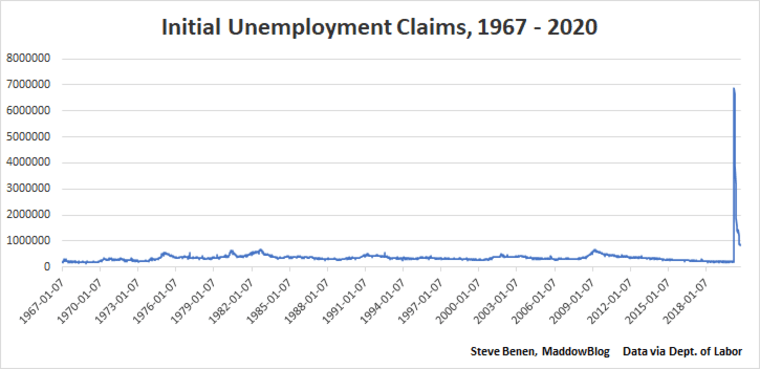
When it comes to weekly unemployment filings, our whole understanding of "normal" flew out the window six months ago. For example, as regular readers know, it was considered a catastrophe during the Great Recession when jobless claims topped 600,000.
But in 2020, as the coronavirus pandemic started taking a brutal toll on the U.S. economy, Americans confronted an entirely new set of standards -- to the point that it seemed like relatively good news a few weeks ago when initial jobless claims fell below 1 million for the first time since March.
Progress has nevertheless been hit or miss. Last week's data pointed in a discouraging direction, but the new report from the Labor Department this morning was more upbeat.
In the week ending September 26, the advance figure for seasonally adjusted initial claims was 837,000, a decrease of 36,000 from the previous week's revised level. The previous week's level was revised up by 3,000 from 870,000 to 873,000. The 4-week moving average was 867,250, a decrease of 11,750 from the previous week's revised average.
The improvement is welcome, though it comes alongside a disheartening observation: we've now had 28 consecutive weeks in which the number of Americans filing for unemployment benefits was worse than at any time during the Great Recession.
All of this reinforces the fact that it's a terrible time to have halted the $600-per-week federal supplement, which expired at the end of July. Nevertheless, the lifeline is gone, unable to overcome Republican opposition.
I put together the above chart, and at the request of some readers, it shows weekly unemployment filings since 1967, when the federal government started keeping track. The image may make it appear as if the last half-century has been relatively stable, but that's really not the case: there were significant peaks and valleys throughout this period.
But those fluctuations now seem minor by comparison.
